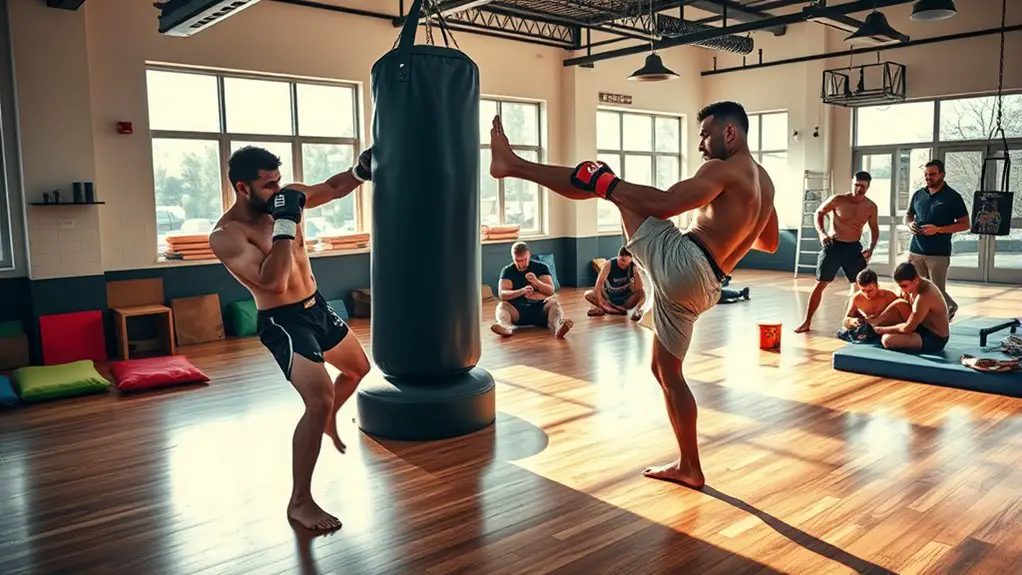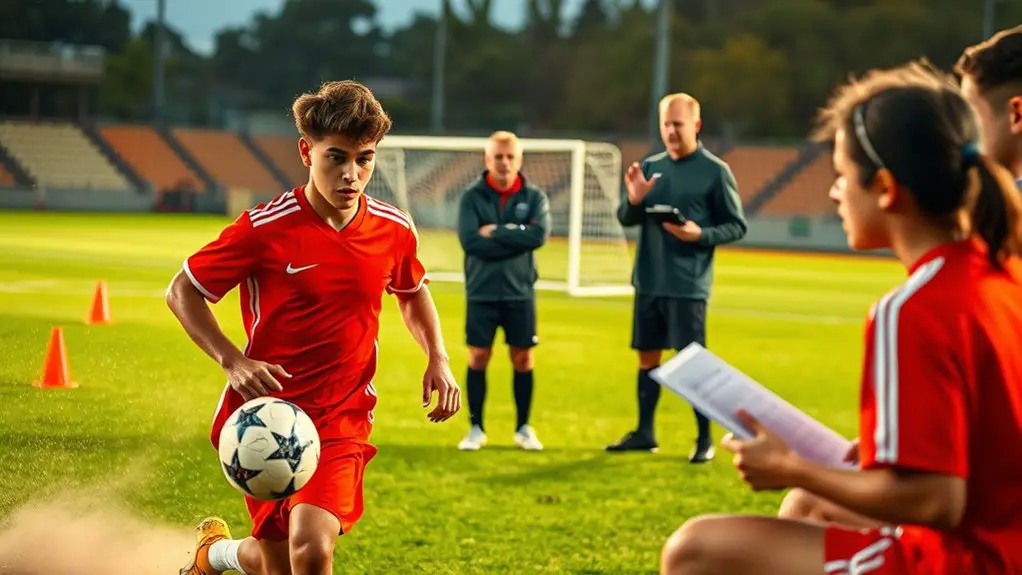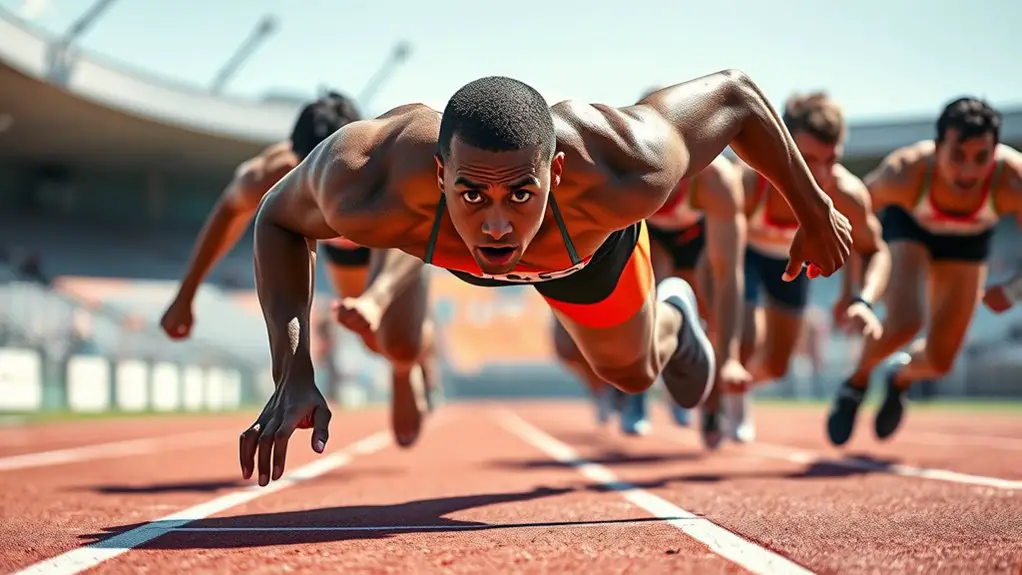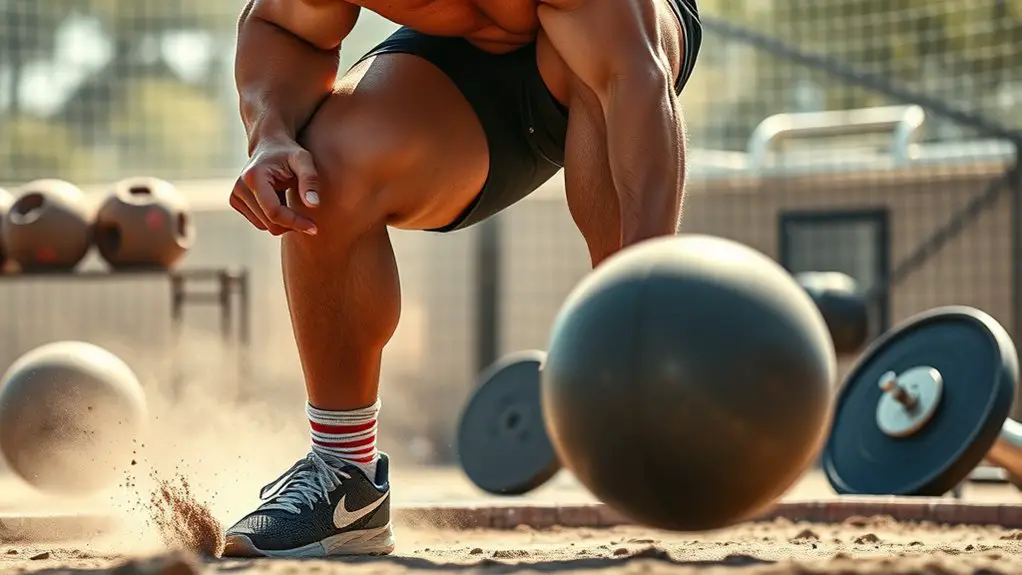The best training programs for MMA fighters blend striking techniques, grappling skills, conditioning, and mental toughness. You'll want to focus on mastering punches, kicks, and ground control while ensuring your conditioning regimens prepare you for fight conditions. Mental resilience is key too, so embrace discomfort and set clear goals. Find a good coach and practice consistently to improve. Stay flexible and adapt your training as needed. There's much more to explore on optimizing your training journey.
Understanding the Basics of MMA Training
While you might think MMA training is all about brute strength, understanding the basics involves much more than that. It's about mastering techniques, enhancing agility, and developing mental toughness. You need to grasp the fundamentals of grappling, striking, and conditioning to build a solid foundation. This isn't just about hitting hard; it's about fluidity, timing, and strategy. Incorporating flexibility and endurance training will also help you adapt and thrive in various situations. Remember, MMA is as much a mental game as it is physical. Embrace the learning process, stay open to feedback, and be willing to push your limits. By focusing on these essential aspects, you'll reveal your potential and truly experience the freedom that comes with being a skilled fighter.
Striking Techniques and Programs
Striking techniques are an important component of MMA, and mastering them can greatly elevate your performance in the cage. You'll want to focus on key elements like punches, kicks, elbows, and knees. Programs that emphasize pad work, sparring, and shadow boxing can sharpen your skills and improve your timing. It's essential to train both power and accuracy; don't forget to incorporate footwork, as it enhances your mobility and evasion. Consider joining a striking-focused gym or finding a coach with experience in Muay Thai or boxing. They'll help you refine your techniques and develop effective combos. Remember, consistency is significant. The more you practice, the more fluid and instinctive your striking will become, giving you the freedom to express yourself in the cage.
Grappling and Ground Game Training
Grappling is an essential aspect of MMA that can determine the outcome of a fight. Mastering techniques like Brazilian Jiu-Jitsu and wrestling will give you an edge on the ground. You'll want to focus on both offensive and defensive skills to control your opponent and escape tricky situations.
Here's a quick comparison of key grappling techniques:
| Technique | Purpose |
|---|---|
| Brazilian Jiu-Jitsu | Submissions and positional dominance |
| Wrestling | Takedowns and control |
| Judo | Throws and balance |
| Sambo | Combines striking and grappling |
Incorporating these techniques into your training will build your ground game, helping you feel more confident and free when the fight hits the mat.
Conditioning Regimens for Fighters
Conditioning is essential for MMA fighters, as it enhances endurance, strength, and overall performance in the cage. To get the most out of your training, focus on a mix of aerobic and anaerobic exercises. Incorporate high-intensity interval training (HIIT) to build explosive power and stamina. Don't forget about strength training; compound lifts like squats and deadlifts can greatly boost your overall strength. Additionally, plyometric exercises can improve your speed and agility, making you more unpredictable in the ring. Always include functional movements that mimic fight conditions. Remember, conditioning isn't just about physicality; it's also about pushing your limits and discovering what your body can achieve. Embrace the grind, and let your hard work translate into freedom in the cage.
Mental Toughness and Focus Development
While physical conditioning is essential, mental toughness and focus are equally important for MMA fighters aiming to excel in the cage. Developing these qualities can mean the difference between victory and defeat. Here's how you can strengthen your mental resilience:
Mental toughness and focus are crucial for MMA fighters, often determining the outcome between victory and defeat.
- Embrace discomfort; it's where growth happens.
- Visualize your success before stepping into the ring.
- Practice mindfulness to stay present and calm under pressure.
- Set clear goals to keep your motivation alive.
Nutrition Plans for Optimal Performance
To achieve peak performance in the cage, your nutrition plan must be as meticulously crafted as your training regimen. You need to fuel your body with the right balance of macronutrients: proteins for muscle repair, carbs for energy, and healthy fats for overall health. Focus on whole, unprocessed foods—think lean meats, fruits, veggies, and whole grains. Hydration's essential too; staying hydrated keeps your energy levels up and aids recovery.
Consider timing your meals around workouts for maximum benefit. Pre-workout snacks can boost energy, while post-workout meals help with recovery. Listen to your body; everyone's different. A tailored approach allows you to perform at your best, granting you the freedom to release your full potential inside the cage.
Incorporating Sparring Into Your Training
Nutrition is just one piece of the puzzle in preparing for fights; sparring plays an essential role in honing your skills and applying what you've practiced. It gives you the chance to feel the rhythm of combat and adapt on the fly. When you incorporate sparring into your training, you'll experience:
Sparring is vital for skill development, allowing you to experience real combat and adapt your techniques in the moment.
- The adrenaline rush that fuels your passion
- The thrill of testing your limits against a real opponent
- The camaraderie built with fellow fighters
- The confidence that comes from overcoming challenges
Each session can ignite that fire inside you, reminding you why you chose this path. Embrace sparring as a crucial part of your journey, allowing you to grow, learn, and ultimately, fight for your freedom in the cage.
Evaluating Training Facilities and Coaches
When you're searching for the right training facility and coach, it's vital to take into account several key factors that can greatly influence your development as an MMA fighter. First, check the facility's cleanliness and equipment quality; a well-maintained gym fosters a positive training environment. Next, consider the coaches' credentials and fight experience; their knowledge will shape your skills. It's also important to assess their coaching style—do they encourage freedom and creativity in your training? Observe how they interact with fighters of all levels. Finally, take note of the training culture; a supportive and motivated team can elevate your experience. Finding the right fit will empower you to grow and thrive in your MMA journey.
Creating a Personalized Training Schedule
How can you create a training schedule that maximizes your performance while fitting into your lifestyle? Start by evaluating your current commitments and energy levels. Design a plan that's flexible yet structured, ensuring you enjoy the freedom to grow as a fighter without burning out. Consider these elements:
- Training consistency: Set aside specific days and times for training.
- Recovery time: Incorporate rest days to allow your body to heal.
- Skill variety: Mix striking, grappling, and conditioning to keep things interesting.
- Personal interests: Allow time for activities that fuel your passion beyond MMA.
Tracking Progress and Setting Goals
As you pursue your journey in MMA, tracking progress and setting goals becomes essential for your development. It's not just about fighting; it's about knowing where you stand and where you want to go. Start by defining short-term and long-term goals that resonate with your personal aspirations. Whether it's improving your striking, enhancing your cardio, or mastering grappling, keep it specific and measurable. Regularly assess your performance; maintain a training journal to note your achievements and areas needing improvement. Celebrate your victories, no matter how small, as they fuel your motivation. Remember, freedom in your training comes from knowing you're evolving. By consistently tracking your progress, you'll carve your path in the dynamic world of MMA.
Frequently Asked Questions
What Equipment Do I Need for MMA Training?
For MMA training, you'll need gloves, shin guards, a mouthguard, and comfortable clothing. A heavy bag, jump rope, and foam roller can enhance your skills and recovery. Stay focused, and enjoy the journey towards your goals!
How Long Does It Take to Become Proficient in MMA?
It typically takes several months to a few years to become proficient in MMA, depending on your dedication, training frequency, and prior experience. Stay consistent, and you'll see improvement; embrace the journey to mastery!
Can I Train MMA at Home?
Ever wondered if you can train MMA at home? You can, but it takes discipline and creativity. With the right techniques, equipment, and dedication, you'll find freedom in your training journey—just stay committed and focused.
What Injuries Are Common in MMA Training?
Injuries like sprains, strains, and fractures are common in MMA training. You might also experience cuts or bruises from sparring. Staying aware of your body's limits and proper techniques can help minimize these risks.
How Do I Find a Training Partner?
Finding a training partner can feel like searching for a needle in a haystack. Start by networking at local gyms, joining classes, or attending MMA events. You'll soon discover someone who shares your passion for freedom and growth.




